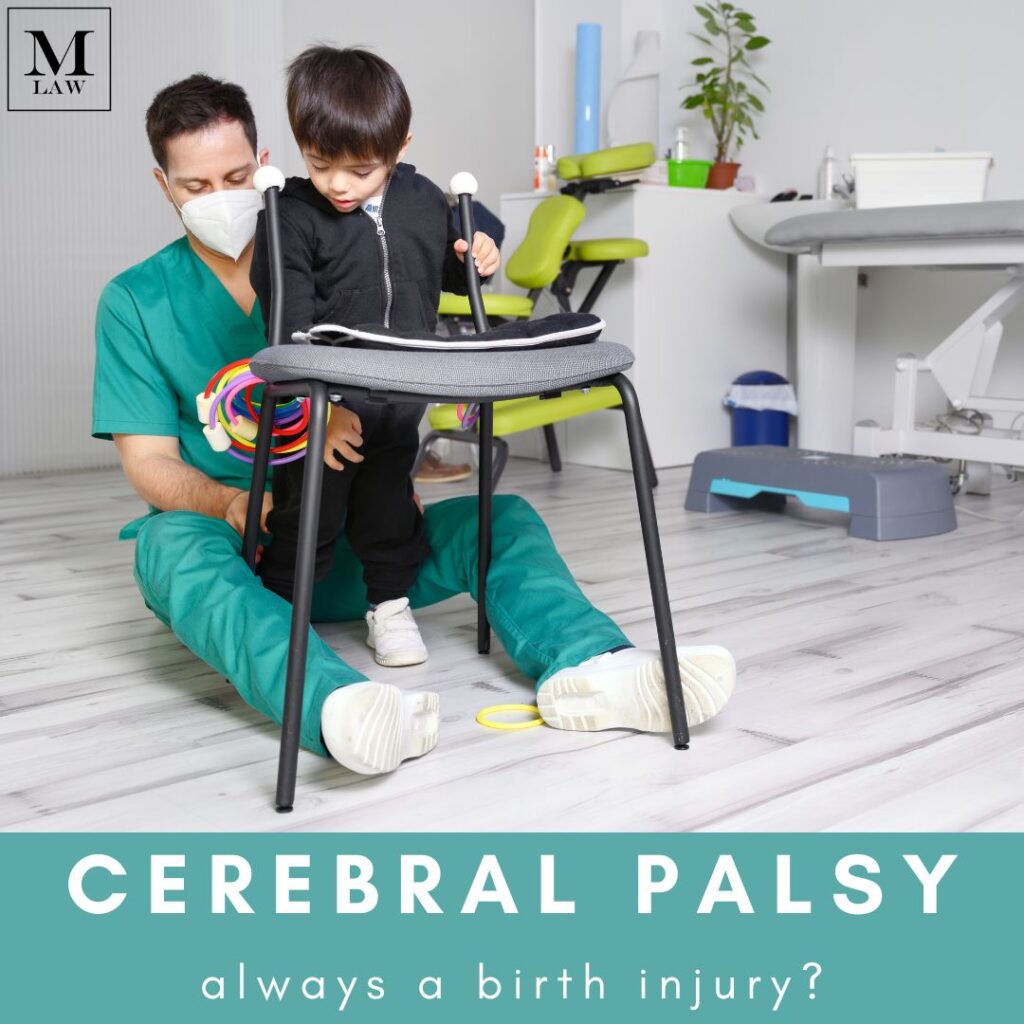Common Types of Medical Malpractice
Mistakes made by medical professionals can occur in various settings, but certain types of errors are more frequent than others. Merely demonstrating that an error occurred is insufficient to prove fault.
The patient must demonstrate that the mistake was below the appropriate level of care for the doctor’s field of expertise and that they were directly harmed as a result.
In other words, a medical malpractice claim cannot be based solely on dissatisfaction with the outcome of a treatment or an error that did not cause any actual harm to the patient.
Free Consultation
Medical Malpractice: Misdiagnosis
On occasion, a physician may fail to identify and diagnose a medical condition that a competent physician would have recognized. This misdiagnosis can lead to the condition progressing to a more severe stage, necessitating more extensive treatment and causing the patient more agony and distress.
Indeed, a misdiagnosis could lead to the prescription of treatments that are not appropriate for the patient, also potentially resulting in harm. The key to such a case is showing what the treating doctor did wrong and how a competent doctor should have gone about diagnosing the condition. If a reasonably skillful and competent doctor would not have made the same mistake under the same circumstances, then the treating doctor may be liable for malpractice.
In the case of a severe ailment like cancer, an erroneous or delayed diagnosis could result in the patient’s demise. To pursue this type of claim, the plaintiff would be required to present expert testimony from a physician who can clarify why a capable physician treating a similar patient would have accurately identified or identified the ailment sooner.
Furthermore, an expert must explain how the error or delay impacted the patient’s health.
The first step after admittance to a hospital, medical clinic, emergency room, dental office or any other professional medical establishment is diagnosis. Correctly diagnosing symptoms is critical to proving medical care to any patient, however sometimes an error in diagnosis can occur in cases where symptoms may not be readily apparent or telling.
Common types of misdiagnosis include:
- Failure to Diagnose Cancer
- Misdiagnosis of Symptoms of Impending Heart Attack
- Misdiagnosis of Stroke
- Failure to Recognize DVT and Pulmonary Embolism
- Misdiagnosis of Diabetes
- Failure to Recognize Meningitis
- Failure to Diagnose Appendicitis
If a patient is not treated properly due to a mistake in diagnosis, the doctor may be held liable for any further injury or damages.
Elements of Medical Malpractice
Medical Malpractice: Surgical Errors & Anesthesia Errors
Many of the most obvious incidents of malpractice occur during surgical procedures. Some types of surgical errors are known as “never events,” which means that the medical profession acknowledges that these errors should never occur.
A patient may not need expert testimony in these cases because the negligence is obvious.
Surgical Errors
Medical negligence during a surgical procedure can often result in further surgeries, infection and sepsis, internal organ damage, immune system failure and even death. Surgical procedures require an enormous level of skill, and even the slightest mistakes can have profound effects on the patient.
Surgical errors can occur in a variety of forms ranging from wrong site surgery, unintentional lacerations of an internal organ, uncontrolled blood loss, perforation of an organ or a foreign object being left in the patients body.
Foreign Object Left in a Patient
In some cases a patient may begin suffering from symptoms of infection and sepsis days or weeks after a surgical procedure. One of the possible causes could be a foreign object inadvertently left in their body by the surgeon.
Perhaps the most common example is leaving a sponge or another surgical instrument in the patient’s body.
Also commonly, gauze or another piece of soft medical wrapping or absorbent material may accidentally be left in the body causing an infection, and potential sepsis and shock.
This type of negligent medical treatment may go unnoticed for weeks, months or even years before its effects begin to manifest themselves, and usually require further surgery. In the worst cases, a patient may suffer serious infection and ultimately die from septic shock.
Wrong Site Surgery
Wrong site surgery is a type of surgical error, usually involving a mis-communication or error in hospital records which leads to a surgeon operating on the wrong organ or external appendage.
In some of the worst cases of wrong site surgeries, patients requiring amputation of an arm or leg will have the wrong one amputated, which results in the loss of both appendages instead of just one.
Unnecessary Surgery
Unnecessary surgery is often related to a misdiagnosis of patient symptoms or a medical decision without proper consideration of other options or risks.
Alternatively, sometimes surgery is chosen over more conventional treatments for their expediency and ease compared to other alternatives. Some of the most common unnecessary surgical procedures include:
- Pacemaker Implant
- Coronary Bypass Surgery
- Cesarean Section
- Hysterectomy
While there are certainly cases where these surgeries are necessary and can save lives, many times the patient’s condition does not warrant such dramatic and invasive procedures.
According to a review by the Albert Einstein Medical Center in Philadelphia, about 20% of all pace maker surgeries are unnecessary and the patients heartbeat fluctuations could be treated with much more conservative treatment.
While recommending an unnecessary surgery is not an act of medical malpractice in and of itself, there are always serious risks in any surgical procedure. If an injury could have been avoided by not having had the surgical procedure, then the decision to order it could be found as negligence and the doctor may be found liable for any damages resulting from the surgical procedure.
Unintentional Laceration or Perforation
One of the most dangerous risks in any surgical procedure is that of cutting, lacerating or perforating an artery, organ or vessel. There are several ways a surgeon can make a potentially fatal mistake during an operation.
It is possible to perforate a bowel or vessel which may go unnoticed causing bile to leak into the body cavity. Over time, this can lead to a severe infection and sepsis which can cause septic shock and death.
Other types of surgical negligence can lead to uncontrolled bleeding or organ damage. In the worst cases, internal bleeding or organ failure can cause death.
Infections and complications after surgery also can cause significant harm if they are not competently treated.
Anesthesia mistakes are relatively infrequent, but can be more dangerous than surgery mistakes. Even small error by the anesthesiologist can result in permanent injury, brain damage, or death. Typical causes of malpractice by anesthesiologists include failing to investigate the patient’s medical history for possible complications, or failing to inform the patient of necessary preoperative procedures (like not eating for a certain period before surgery). Other common anesthesia errors include giving too much anesthesia to the patient, failing to monitor the patient’s vital signs, improperly putting a tube in the trachea to assist the patient with breathing (“intubation”), or using defective equipment.
Anesthesia is an inherently risky part of any major medical operation, and requires a specialist, an anesthesiologist, to administer and monitor the effect on the patient.
Prior to any medical procedure requiring anesthesia, the anesthesiologist will review the patient’s medical record, history, prior medications, allergies and time requirements of the operation to determine the best combination of drugs to use.
Anesthesia malpractice can happen either during the pre-operation medical review, or during the procedure itself.
Negligent Anesthesia Preparation
If the anesthesiologist fails to properly review all the patient’s medical records, he or she may administer drugs to which the patient is allergic, causing injury or death.
Alternatively, an anesthetic contraindication may be present which means, due to previous medications given the patient, a certain anesthetic agent may pose increased risk of complication and should not be used. If it is used, this type of anesthesia malpractice may lead to the patient’s death.
Anesthesia is a key part of the surgical process that is often taken for granted but should not be. Mistakes by an anesthesiologist can cause devastating consequences, including brain injuries and death.
Failure to Monitor Anesthetic Performance
Even if the pre-op work is done correctly, there is potential for negligence should the anesthesiologist not monitor the patient and react in time to and changes in vital signs.
It is even possible for the anesthesiologist to run into logistical problems, such as a lack of available oxygen. If these types of situations are not anticipated during the operation, the patient may lose their life due to medical negligence.
An anesthesiologist may fail to review a patient’s records for possible risk factors, fail to provide the patient with proper instructions before the procedure, provide the wrong amount of anesthesia, or fail to monitor the patient’s vital signs while administering anesthesia.
In some cases, the equipment used to administer anesthesia is defective, which may mean that the patient can bring a claim against the manufacturer of the equipment.
Medical Malpractice: Medication Errors
Medication errors are one of the most common forms of medical malpractice and can occur many ways. For example, a doctor might make a mistake on the initial prescription, administer a drug inappropriately, or fail to take notice of a potentially harmful drug interaction. In a hospital setting, one common form of injury results from the wrong medication being given to the wrong patient. However, the most common medication errors, by far, involve improper dosage.
Medical professionals, including doctors, nurses, and others, can be held accountable for errors in prescribing or administering medication.
Liability for prescription mistakes during the prescription process typically falls on the doctor, while liability for mistakes during administration generally falls on the nurse and the hospital that employs them.
Prescription mistakes can sometimes be linked to a misdiagnosis, as doctors may prescribe medication for an incorrectly diagnosed condition.
Other instances involve prescribing an incorrect dosage or administering the wrong amount of medication. Furthermore, nurses may inadvertently confuse patients and give medication intended for one patient to another.
In some cases, equipment in the hospital may be defective and administer an inappropriate dose, leading to medical errors.
Medical Malpractice: Birth Injuries
Medical professionals involved in the childbirth process, such as gynecologists, obstetricians, and others, may cause permanent harm to newborns if they fail to meet the professional standard of care.
While some conditions that result from malpractice may have innocent causes, others, such as cerebral palsy, paralysis, nerve damage, developmental disorders, and fractures, can be linked to medical negligence.
Inadequate care or treatment before childbirth can also harm the mother and child, such as a failure to diagnose a medical condition or birth defect.
Additionally, errors during the delivery process can cause birth injuries. Examples include a physician’s failure to order a necessary cesarean section, inability to handle complications competently, or incorrect use of equipment like forceps.
Medical Negligence and C-Sections
A cesarean section (c-section) is often a requirement to preserve the health of the baby in cases of fetal distress. Commonly the baby will show signs of fetal distress, such as a lack of oxygen to the brain and reduced heart beat, and a c-section must be administered immediately to prevent injury to the fetal brain.
If the medical staff fails to perform the c-section in time, delaying the procedure in hopes of delivering the baby normally, that decision may lead to permanent brain damage to the baby.
Mistreatment of Difficult Birth
During difficult births, the medical staff may have to use methods for forcing the extraction of the child. Usually a combination of forceps and suction will be used to force the child out of it’s mother. One of the risks associated with forced extraction is that any improper, or negligent handling of the process can cause permanent injuries to the baby, especially nerve damage such as brachial plexus injury.
Complications with Induced Labor
Many times, doctors and medical staff will attempt to speed up a delivery, or avoid a c-section by inducing labor. Oxytocin (common brand used is called Pitocin) is administered to expedite the delivery of the child, but this drug may have side-effects if not monitored carefully.
In cases where fetal distress is detected, such as a prolapsed umbilical cord, it is critical that the administration of pitocin be ceased immediately, and a c-section be considered. In these cases, the doctor has precious few minutes to judge the situation and decide on the best course of action to prevent serious permanent injury to the new born baby.
A number of injuries can be caused by medical malpractice to a fetus during pregnancy or to a child during the birth process. Some of these injuries can be quite severe, such as brain injuries (like cerebral palsy and seizure disorders), fractured bones, and full or partial paralysis. Of course, many of these are caused by natural causes, as well. Nevertheless, if a doctor’s negligence caused these conditions or the doctor failed to take steps to treat a condition that could lead to these conditions, medical malpractice may have occurred.
These injuries can arise at a number of different junctures. If negligent medical treatment is provided during the pregnancy, it could harm the fetus, the mother, or both. Examples of negligent prenatal care include failing to diagnose a medical condition of the mother (like preclampsia, Rh incompatibility, hypoglycemia, anemia, or gestational diabetes), failing to identify birth defects, failing to identify ectopic pregnancies, or failing to diagnose a disease that could be contagious to the mother’s fetus (like herpes, HIV, or lupus). If the negligence occurs during childbirth, it may be as a result of failing to anticipate birth complications due to the baby’s size, failing to note that the umbilical cord has become tangled around the baby, failing to respond to signs of fetal distress, failing to administer a cesarean when needed, or improperly using forceps or a vacuum extractor.
Not sure if your situation is medical malpractice?
Contact us for a free consultation!
You Deserve Justice. Get Started Now.
Merson Law Featured On





